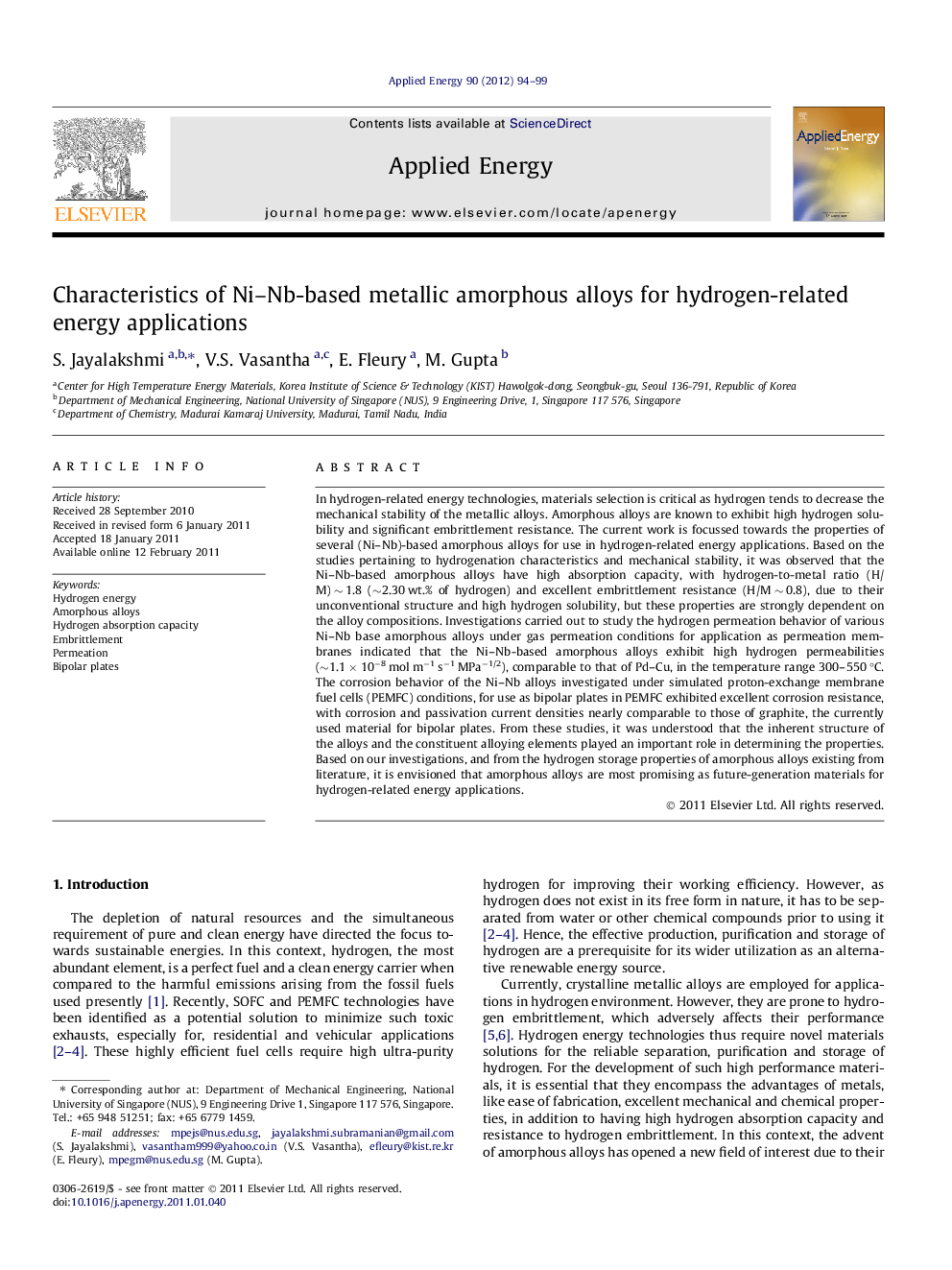| Article ID | Journal | Published Year | Pages | File Type |
|---|---|---|---|---|
| 243909 | Applied Energy | 2012 | 6 Pages |
In hydrogen-related energy technologies, materials selection is critical as hydrogen tends to decrease the mechanical stability of the metallic alloys. Amorphous alloys are known to exhibit high hydrogen solubility and significant embrittlement resistance. The current work is focussed towards the properties of several (Ni–Nb)-based amorphous alloys for use in hydrogen-related energy applications. Based on the studies pertaining to hydrogenation characteristics and mechanical stability, it was observed that the Ni–Nb-based amorphous alloys have high absorption capacity, with hydrogen-to-metal ratio (H/M) ∼ 1.8 (∼2.30 wt.% of hydrogen) and excellent embrittlement resistance (H/M ∼ 0.8), due to their unconventional structure and high hydrogen solubility, but these properties are strongly dependent on the alloy compositions. Investigations carried out to study the hydrogen permeation behavior of various Ni–Nb base amorphous alloys under gas permeation conditions for application as permeation membranes indicated that the Ni–Nb-based amorphous alloys exhibit high hydrogen permeabilities (∼1.1 × 10−8 mol m−1 s−1 MPa−1/2), comparable to that of Pd–Cu, in the temperature range 300–550 °C. The corrosion behavior of the Ni–Nb alloys investigated under simulated proton-exchange membrane fuel cells (PEMFC) conditions, for use as bipolar plates in PEMFC exhibited excellent corrosion resistance, with corrosion and passivation current densities nearly comparable to those of graphite, the currently used material for bipolar plates. From these studies, it was understood that the inherent structure of the alloys and the constituent alloying elements played an important role in determining the properties. Based on our investigations, and from the hydrogen storage properties of amorphous alloys existing from literature, it is envisioned that amorphous alloys are most promising as future-generation materials for hydrogen-related energy applications.
